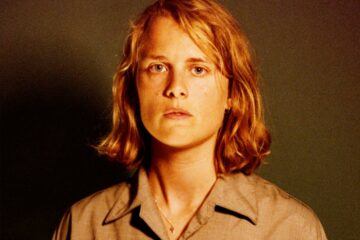
From photographing Tupac Shakur to Debbie Harry, Michel Haddi has captivated the world with his lens.
In this edition of Six of the Best, we dive into six iconic works of the late 20th-century zeitgeist and the people that shaped it.
In a world increasingly gripped by the pixel and the screen, Michel Haddi stands as a beacon for the kind of artistry that can’t be replicated in ones and zeros. A name spoken with reverentially in the corridors of Vogue, GQ, and Harper’s Bazaar, Haddi’s journey is as remarkable as the illustrious names he’s photographed.
Born in 1956 to an Algerian Muslim mother and a French soldier he never knew, Haddi’s turbulent early years were tempered only by the glossy pages of Vogue magazines his mother brought to his orphanage. They were not merely magazines; they were passports to another world, an escape route from the confines of his challenging childhood.
Haddi has navigated a globe-trotting career with an unerring sense of purpose, a Parisian sensibility refined in London, New York, and Milan. Whether capturing Clint Eastwood’s grizzly, rugged appeal or distilling the mystifying energy of Uma Thurman, he digs deeper to capture not just a snapshot but an essence of his subject.
The photographer’s life itself reads like a gripping novel filled with turns and twists. Once a young boy perusing fashion magazines in a Parisian orphanage, he now helms his own publishing house, MHS Publishing, right here in London. His cultural and artistic capital make him more than just a veteran photographer; they establish him as a pioneer in an industry where art and commerce coalesce in an often confusing way.
READ MORE: Michel Haddi | Capturing the essence of Bowie, JLo, and Debbie Harry in Beyond Fashion
As we find ourselves amidst uncertain times, Haddi’s work — and perhaps more importantly, his life’s philosophy — offer a much-needed tonic. We sat down with Michel to explore six of his famed works.
Tupac Shakur

Tupac Shakur, aged 22, photographed in Los Angeles in 1993 by Michel Haddi
“I used to live in Venice Beach, California. Back then, it was ruled by gangs: the Crips and the Bloods, and the Mexican gangs. My next-door neighbours were Mexican gangsters — they were actually very nice to me. But these guys, all the gangs in California, used to kill each other. You’d hear a Kalashnikov gunning someone down in my neighbourhood at night. It didn’t really faze me. I’d grown up in a neighbourhood similar to Compton, so the conflict was normal for me. One morning, I was walking across my front garden, and a guy was lying there. He’d been stabbed to death. I knew the police were coming, so I couldn’t care less.
“On the way to this shoot in LA, I almost died in a car crash on the freeway, so that gives you some idea how I felt then. When we arrived at the studio, Tupac was there with John Singleton — they had just finished Poetic Justice. It was a big thing. The first time Tupac shifted from being a musical artist to an actor, he was a very good actor.
“I had a vision when I first saw him and asked him, “Do you mind if I dress you like Martin Luther King? You look like him.” He was very polite and said, “Yeah, alright!” and I think he was very happy that a photographer was asking him to wear a suit for the first time.
“But John Singleton wasn’t happy at all. He said, “No, no, it’s not like that!” and I said, “John, you seem to want to do the picture yourself; why don’t you do it?”
“And Tupac, being extremely elegant and recognising I was an artist trying to work, told John, “Let the man work.” After that, he opened a big cigar, took out the tobacco, and put ganja inside it. He then closed it, smoked it, and I got stoned just from the smoke in the room.
“On the cover of The Legend, he looks like Julius Caesar with his eyes closed, like an emperor, exactly like a bust of Caesar. Both Julius Caesar and Tupac Shakur were assassinated.”
Debbie Harry
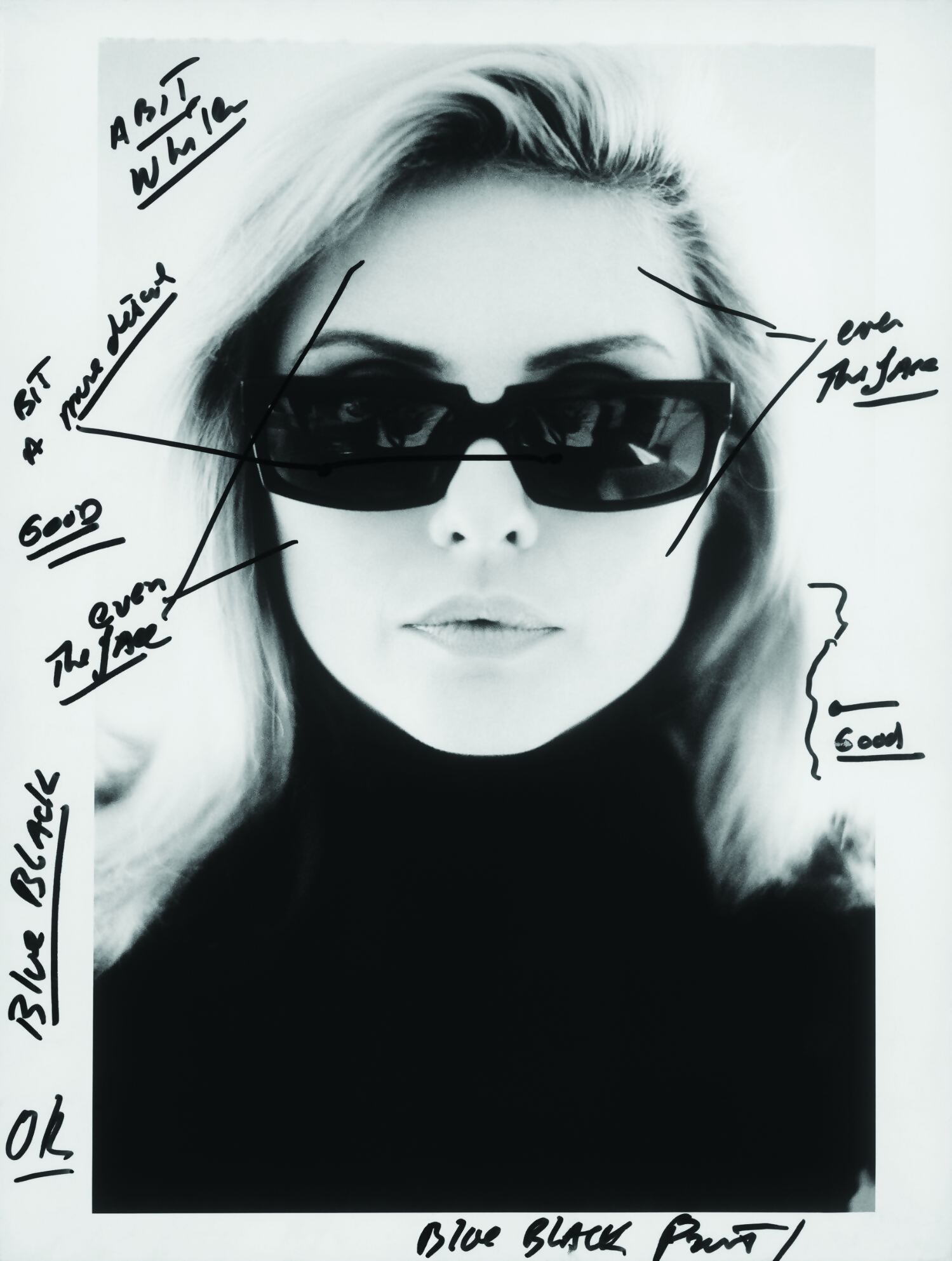
Debbie Harry, British Vogue, New York, 1994, Michel Haddi
“As a man who loves women, I could not believe how beautiful Debbie was. She’s very sweet and has a beautiful little voice. I told her, “Darling, you’ve got this look like Marilyn Monroe. I cannot believe it,” and that made her very happy. It’s very important you find a little thing to connect with someone because you have exactly 20 seconds to shake hands and chat before doing the shoot.
“On this occasion with Debbie, I brought a big bouquet of flowers from British Vogue and myself and gave them to her. We shot it at the Algonquin Hotel in New York and after that we became friends. We used to live very close to each other and used to hang out, with her and Stephen Sprouse. We used to go for late dinners at a diner nearby and Debbie would be wearing jogging pants with glasses and a hoodie and that’s it. Very cool girl.”
Malcolm X’s daughters, Ilyasah and Gamilah Shabazz
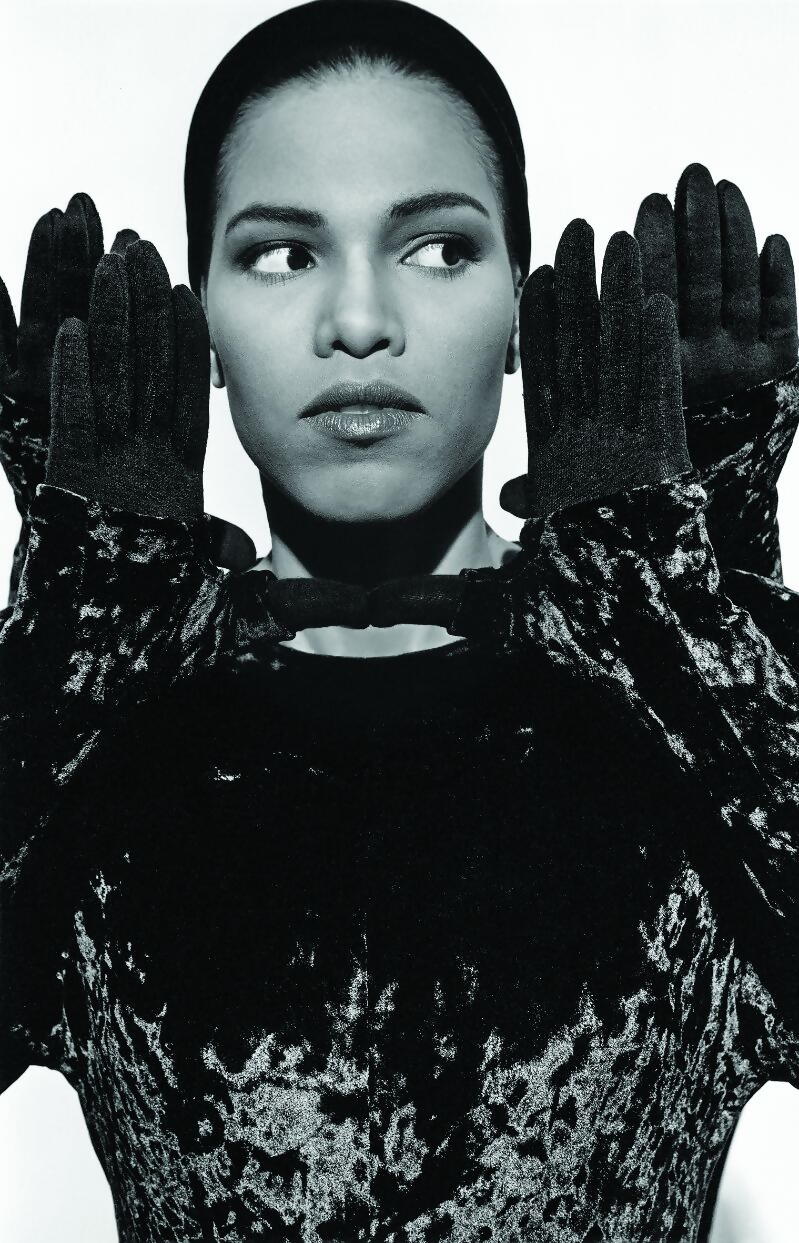
Malcolm X’s daughters, Ilyasah Shabazz & Gamilah Shabazz Interview Magazine, New York, 1992, Michel Haddi
“Back in the 1990s, in America, many white photographers didn’t want to be associated with black culture. Of course, you had big stars like Avedon and Irving Penn, who didn’t mind photographing all races and religions — but that’s because they were true blue artists. But when I arrived in America, all the magazines, whether it was Vogue, Interview, etc., were all asking me to shoot African-American artists. It took me about 30 years to understand why, and it’s because there were simply not enough photographers willing to do it.
“That’s America. That’s the way it is. It has a lot of problems to deal with. Anyway, so I met the girls of Malcolm X. I knew the whole story already, of him going from a pimp to finding the light and travelling to Mecca, but I was interested in the two daughters, not their father. They were surprised to be photographed and interviewed, so they were a bit apprehensive and coy. Even if I’m slightly dark, I’m ‘white’, but because of my French accent, the ladies realised they were in a different kind of space.
“I liked the idea of having a ‘double’, photographing one girl behind the other. So we took this photograph like that. Then, at the end, I said, “You know what? The symbol of your dad, the X, would you mind making the symbol together?” and they said yes, no problem! That actually turned into a bit of a scandal later on when a big advertising company asked me to redo it though!”
Verushka

Veruschka wearing the “saharienne” by Yves Saint Laurent, New York, 1998, Michel Haddi, courtesy of 29 Arts in Progress Gallery
“This one’s very important for me because Verushka used to be my girlfriend. For a year or so, we used to hang out. She was absolutely one of the most incredible women I’ve ever met in my life. Countess Vera von Lendhorff. Her father was part of the 20 July plot to assassinate Hitler, and he was hanged in Berlin whilst she was in a Russian camp. Verushka had balls like you wouldn’t believe: she told me how she moved to New York and called on Richard Avedon, who turned her into a really big star.
“I got the chance to photograph her in New York. She’s smoking a cigarette, super cool, like Greta Garbo. We put on a big show, and I remember a woman passing by, looking at the photo we’d taken. She said, “Oh my God, she was very beautiful back then!” I looked at her and said, “Did you know that photograph was taken two months ago?” She felt so embarrassed because she couldn’t believe that Verushka was, at the time, 48 years old!
“Verushka was like an animal, like a lion. Everybody was in love with her everywhere we’d go, from pop stars to Warren Beatty to Jack Nicholson. She’s an icon.
Marisa Berenson
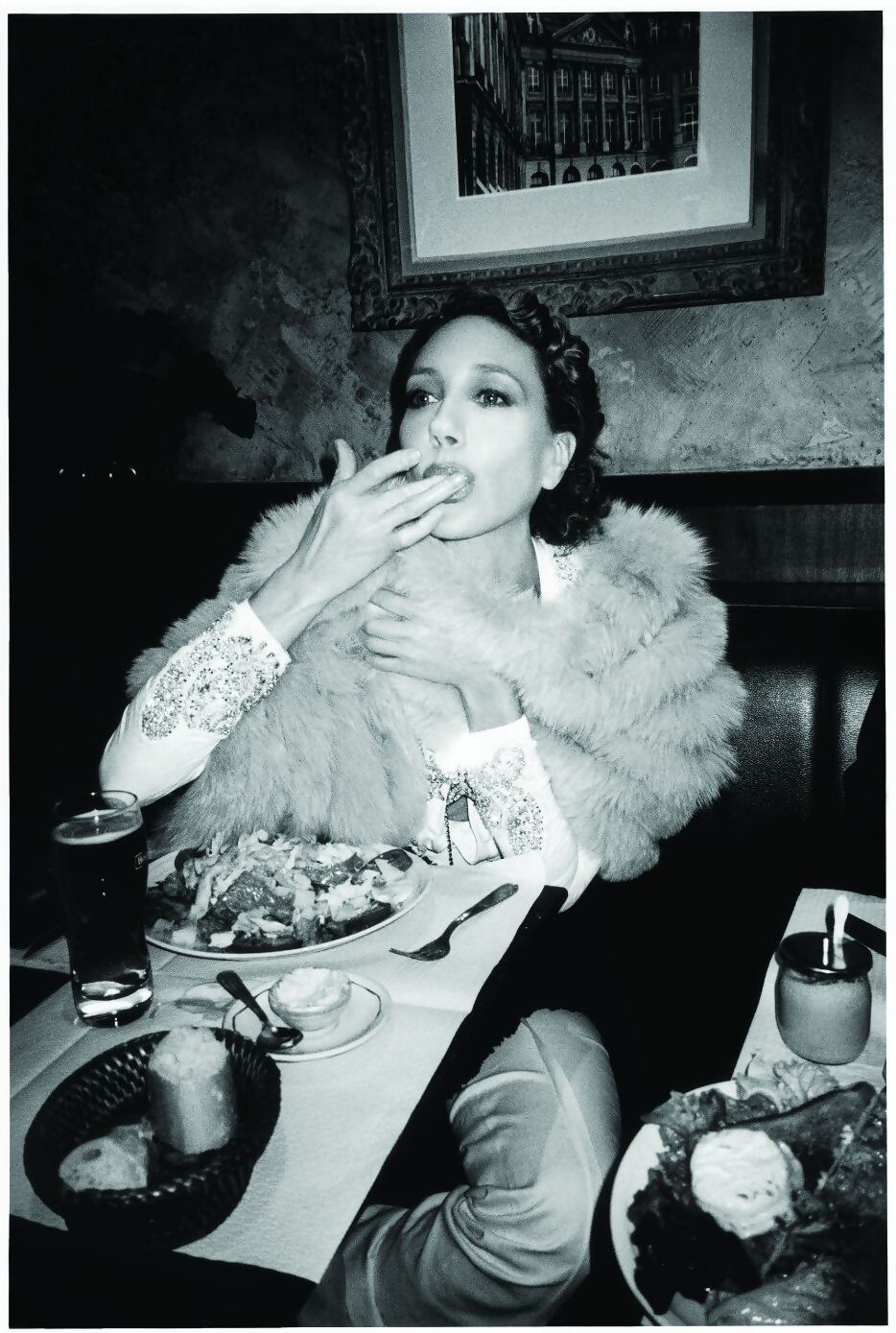
Marisa Berenson, Haddi & More magazine, Paris, 2005 Michel Haddi – 29 Arts in Progress Gallery
One day, when I was in Paris, a friend said Marisa and I should work together. She knows what she’s doing, she’s been a top model since she was 16 years old. She’s the granddaughter of Schiaparelli and we love to work together because we always find new ideas.
With this shoot, we’d actually already done it in the hotel before we decided to have lunch. I said, “You know what, darling, why don’t we take some photographs?” And I just loved the idea of a contessa, an aristocrat like Marisa, having a lunch of sausage, chips, and beer. And she agreed to it! So that’s what we ate.
Even now I stay at her place when I’m in Marrakech.
Linda Evangelista
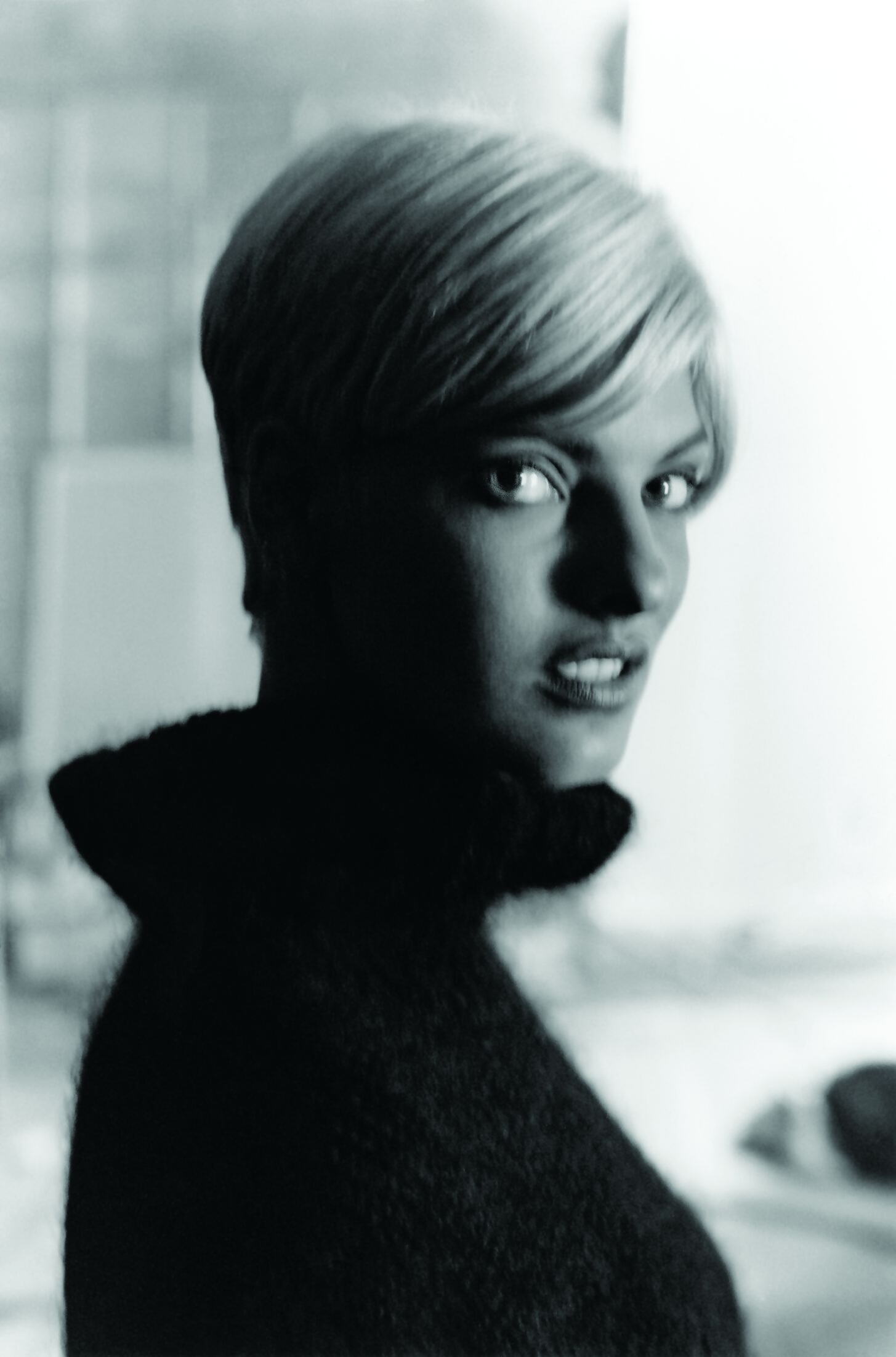
Linda Evangelista for British Vogue, 1992, on the set of George Michael ‘Freedom!’ video
“That shoot was for British Vogue, who’d asked me to go onto the set of the George Michael music video ‘Freedom!’. Linda was among the models who were starring in the video, selected by Vogue. But the great thing about it was that the director was David Fincher, and guess what? I didn’t get along with him at all. I didn’t like him. He didn’t like me. If I saw him tomorrow, I’d tell him the same thing. I like your films, maybe, but you? No, no.
“But Linda, she was great. She was smoking a cigarette in her van, and I went over to take some pictures. She was absolutely beautiful. She was so hard-working and focused on whatever she was doing.
“Interestingly, at the time Vogue only dedicated a couple of pages to the shoot, they didn’t think it was that important, but the video and song went on to become a classic. With the picture of Linda, I tried to do something very simple with the lighting. I think I succeeded.”
Want to write about music? Pitch us your ideas.
Are you passionate about music and have a story or hot take to share? whynow wants to hear from you. Send your music-focused pitch to editors@whynow.co.uk. Let’s make some noise together.

